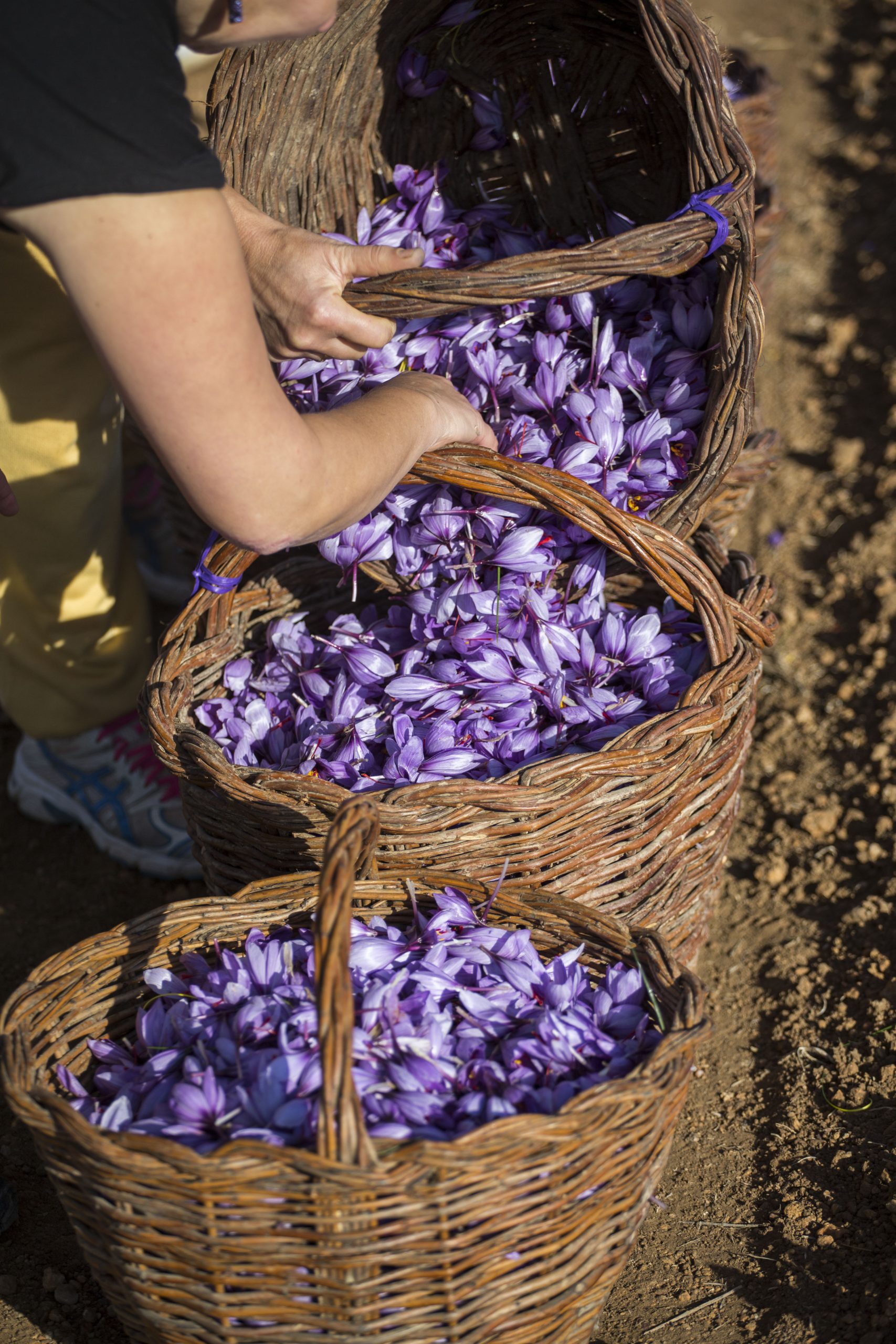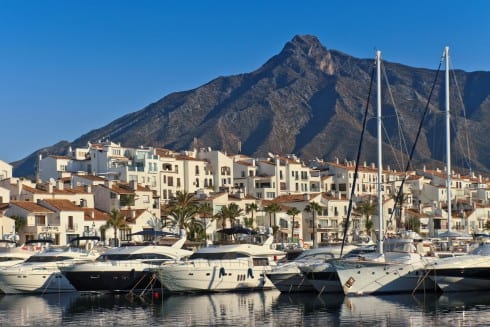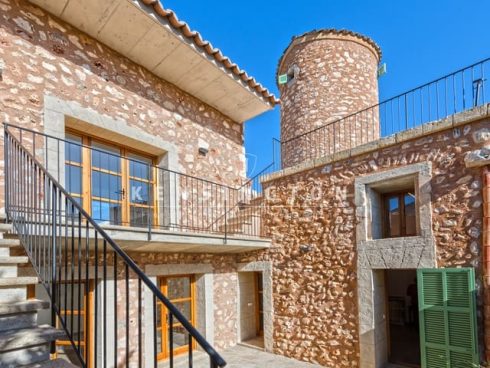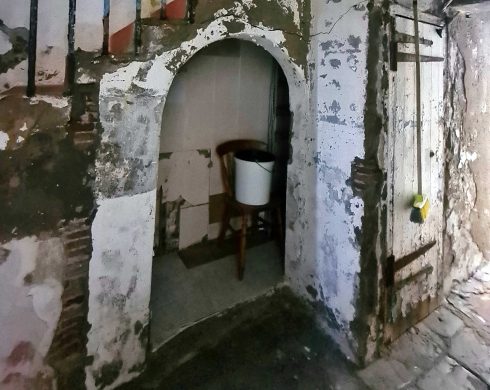FROM the bouillabaisse fish soup of Southern France to the biryani rice dishes of South Asia there is a common thread (literally); the dried stigma threads from the crocus flower known as saffron. Saffron Walden in Essex cultivated the spice until 1768 when cheaper Continental imports cannibalised the British market. Here in Spain, no self-respecting quality paella would be complete without the reddish hues and earthy flavour of Spanish saffron.
Saffron comes from the dried stigma and styles (threads) of the crocus flower and is cultivated in an arid, windswept belt from Central Spain in the West to Kashmir in the East. Whilst La Mancha with its protected appellation known as the Denominación de Origen Protegida is responsible for over 90% of Spain´s production there is also a small amount cultivated in Teruel.

These russet threads have historically been a multi-purpose spice. The Romans used saffron to perfume their baths; Henry VIII´s female courtiers were banned from dying their hair with it, albeit that was largely to protect the greedy monarch´s own gastronomic supply and German merchants were burned at the stake for adulterating the precious styles.
The arabs used saffron for medicinal purposes and even today doctors report that it can help with Alzheimers; PMS and depression; memory loss; eyesight (particularly in age-related macular degeneration); some cancers and pain relief.

So if you´re in danger of losing the thread of the conversation perhaps stir in a few crimson strands into your rice dishes, savoury or sweet … if you can remember.
In its heyday during the 20th Century, the Saffron market in Valencia or Lonja de Azafrán was a hive of activity selling saffron from La Mancha and Teruel for most of the year until the advent of the railways which then enabled buyers to travel to the production areas and ensure that the prized raw product didn´t succumb to any adulteration en route.
Someone who has harnessed the properties of saffron in various guises is David Sáenz whose Madrid shop and online business, La Melguiza, is a temple to the treasured spice. Having jumped on the bandwagon on the burgeoning interest in quality Spanish saffron Sáenz offers a wide range of products from saffron-infused shampoo to body lotion, serums, candles and even honey and saffron sweets.

According to Sáenz, “About 100 years ago more than 50% of Spanish cuisine used saffron. For example, it was used in all dishes containing pulses such as callos y garbanzos (tripe and chickpeas); pollo a la pepitoria (chicken with almond and saffron sauce); seafood dishes as well as desserts.” Saffron then fell out of favour until about 10 years ago when sales picked up as customers seek out quality versatile ingredients close to home.
Borja Azcutia, the acclaimed chef of Valencia´s eponymously-named restaurant, is particularly impressed with the earthy meadow flavours of saffron in puddings, “specifically in the crème anglaise we make for our mille feuilles.”

Sáenz´s next venture is organic saffron-flavoured pistachio nuts from La Mancha which I must say are extremely moreish and I noticed a fair few Middle Eastern diplomats place huge orders after trying only a handful. “I reckon these will be as successful our unpasteurized orange blossom saffron honey”, says Sáenz astutely. The Spanish cultivation of saffron and pistachios has incurred quite a few trade missions between Iran and Spain of late. With Spanish saffron producers sharing inside knowledge to help the Iranian farmers modernise their production methods, whilst Iranians have been coming over to Spain to share their pistachio production expertise of this green gold crop which is on the rise in La Mancha and Andalucía.

I was lucky enough to have been brought up on kilos of pistachio nuts as my step grandfather was frequently regaled with exotic gifts during his work as an orthopaedic surgeon at Great Ormond Street hospital for Sick Children in London and around Kuwait. Known for his no-nonsense medical approach he´d often drag his learned finger across children´s limbs indicating where they had to be amputated and leave it to the shocked interpreters to embellish his diagnosis with the right dose of empathy.
It was while he was doing the rounds on the ward that he met my mother who had inconveniently toppled off a first-floor balcony into the basement below and cracked her head open. My grandmother recognised his booming voice enjoying a few jokes with the nurses, having known him as a teenager and was smitten. As Winston Churchill said, “An optimist sees the opportunity in every difficulty.”

They enjoyed a double decade-long courtship before finally tying the knot. My grandmother, normally rather composed, must have been a tad nervous as she was struck dumb by a fit of the giggles halfway through the ceremony that rendered her completely unable to pronounce her name. The registrar was unimpressed and thought she was taking her second commitment to marriage rather too lightly and so threatened to expel her out of the plum London registry office onto the busy King´s Road to reconsider.
Fortunately, the nuptials eventually went ahead and I remember much puerile amusement between them during the ensuing years as they both kept up the pretence of not knowing where the one had hidden the other´s favourite treat in an over protective bid to reduce its consumption. Granny´s Cadbury´s Fruit & Nut bars were often stashed under starched sheets in the laundry cupboard whereas George´s whisky bottle remained a permanent fixture in the bread bin. I can only assume that both of them had second sources. Either way, they were definitely both fruit and nut cases. *

*Reference to Cadbury´s well-known advertising slogans of the 1970´s
READ MORE:
- EXPANDING HORIZONS: What a difference breakfast makes from the UK to France and Spain, writes Susannah Grant
- MESSAGE IN A BOTTLE: Finding out a little more about aromatherapy
- EXPANDING HORIZONS: Exploring the Azores is the ideal family break











